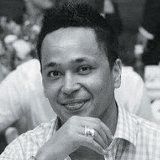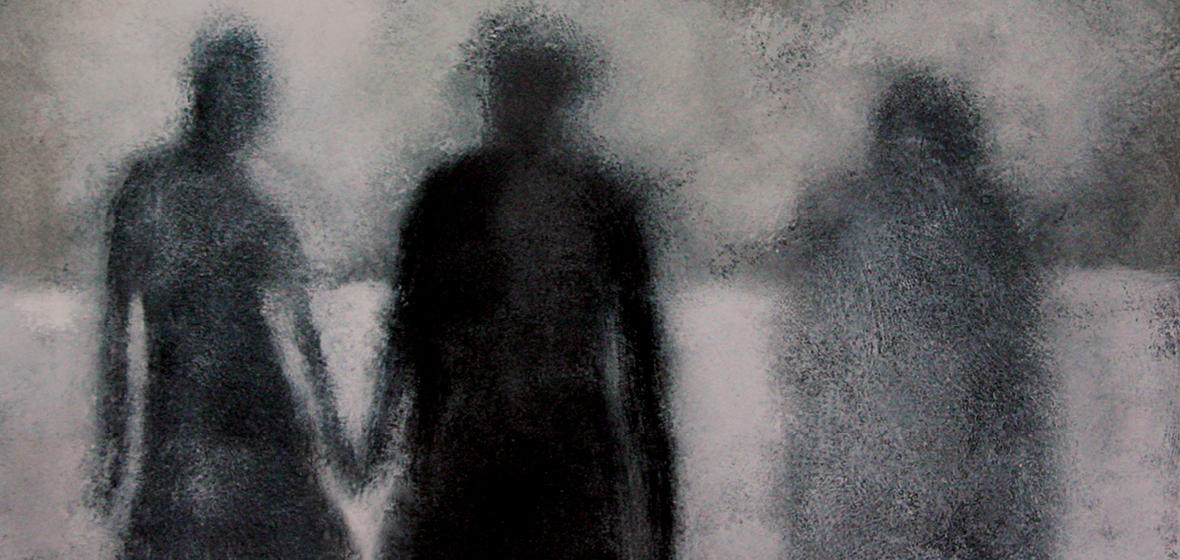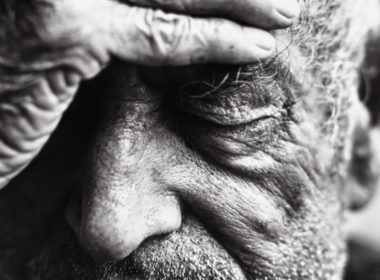Access to justice is a very different experience for culturally and linguistically diverse communities. There can be a problematising of migrant communities and, as a lawyer and a community member, there is a lot of time spent trying to change the narrative.
Whether it’s First Australians or those more recently arrived on our shores, persons of colour face a multitude of barriers in accessing justice. As recent global protests reveal, there is much more work to be done to realise a justice system that is truly colour-blind. From expanding the use of interpreters to recognising the deep wounds of the past, lawyers of colour and legal experts share their experience and guidance.
As soon as his legal career began, Zaahir Edries stood out. “[In work situations] I would often notice that I was the only person of my colour and religion,” says Edries, the general counsel at Get Up!, one of the founders of the Muslim Legal Network (NSW), and a member of the Law Society of NSW’s Diversity and Inclusion Committee.
“The legal profession in NSW and Australia is fairly homogenous. My dad is a cab driver, I went to public school. And when you meet so many other law graduates, they went to the fanciest schools in Sydney or their dad was a judge.
“But ideas around justice and access to justice have been a running theme throughout my life. We came to Australia for opportunities and to flee the system we were born into.”
Edries, who as a child fled Apartheid South Africa with his family, sees firsthand the hurtful effect of political rhetoric post-September 11, especially around the suite of counter-terrorism legislation introduced, and how it shapes the Muslim community’s feelings toward the state’s justice system.
“It very much impacted on our community,” he says.
“When there is language used by politicians that makes you feel less than human, outreach by the judiciary – who are another arm of the executive – is so important. We do not want to be seen as a deficit or spoken about in deficit terms.
“But when that [political rhetoric] is what you hear as a Muslim or a brown person, you feel like you are behind the eight-ball before you even appear. You are not going to engage with the system, when you do have a right to flex, because you feel the system doesn’t speak for me and my people.
“Access to justice is a very different experience for culturally and linguistically diverse communities. There can be a problematising of migrant communities and, as a lawyer and a community member, there is a lot of time spent trying to change the narrative.”
This is why the Muslim Legal Network (NSW) organised for the NSW Supreme Court to include an Islamic service at an Auburn Mosque as part of their opening of law term ceremonies. It has now been a standing part of the commencement calendar since 2012.
At the first service, Edries recalls one judge expressing concern that “their only experience with members of this community is from the other side of the dock”.
“That is a very sobering thing if you think of it like that,” he tells LSJ.
“The first service could be seen as a one-off, but the fact they kept coming is very important. It is critical for the community to see the people who are dispensing justice and also for the judiciary to meet people in that community.”
He singles out NSW Governor Margaret Beazley, who still attends the opening of law term service at the mosque as well as the Ramadan night markets in Lakemba, as an example of positive relationship building between the Muslim community and the judiciary.
 Zaahir Edries
Zaahir Edries
Creating more inclusive structures
When asked by LSJ to identify the biggest barriers for Indigenous clients in the justice system, Rebecca McGrath, a senior solicitor for Legal Aid and a Wiradjuri woman from Parkes in Central West NSW, sorts through a list she prepared carefully with her colleagues.
After graduating with her law degree, McGrath was offered a job in a commercial law firm but turned it down and joined Legal Aid’s Indigenous Graduate Program. Since then, she has worked in the criminal courts, as part of the Driver Disqualification Reform team, and is now based at the Hunter Drug Court in Toronto.
“The biggest issue I see from the drug court perspective is the lack of options if someone has matters of violence on their record [which often renders them inappropriate],” she says.
“There is a need to ensure the safety of the community and the team, however I feel that convictions for matters of violence are common for many Aboriginal people in the justice system, particularly those who have experienced complex trauma and who have often been exposed to violence as children.
“From my observations, that trauma can manifest as behavioural issues from a young age, with violent behaviour in childhood, adolescence and inevitably as adults. We know how hard it can be to break a cycle of violence and abuse. It means they are excluded from access to programs that we know work in spite of a genuine desire to change and rehabilitate.”
She also sees barriers when it comes to the granting of bail, such as accessibility of surety funds, and basic issues like people being taken into custody without a phone or with a flat battery, meaning they cannot contact family.
“Without that, an acceptable person [for bail purposes] cannot be contacted and we see people in custody with bail granted who cannot meet a basic condition,” she says.
McGrath says this is pertinent in light of findings from the NSW Bureau of Crime Statistics and Research that defendants on remand are more likely to subsequently receive a custodial sentence upon conviction.
“It leaves many of our clients with that feeling that you go to court, you go to jail. It’s an expectation,” she says.
“There should be more Aboriginal people employed in community corrections, as well as cultural training to promote an understanding of the background and history … as well as culturally appropriate sentencing options. Having more diversionary schemes, such as circle sentencing, is crucial.”
And she says it is not just metaphoric archaic structures that should be dismantled.
“Even very basic things, like imposing architecture and design of old courtrooms where you have these big docks and bars all around that. The newer courts have definitely improved this. Newcastle Court is one example where it is light filled and you don’t feel that sense of intimidation,” McGrath says.
“Aboriginal Liaison Offers should be in every court. In the courtrooms where we do have them, they are an incredible resource and significantly affect the outcomes for Aboriginal people.”
The COVID-19 pandemic transformed the dispensing of justice in NSW in a matter of days, with options for video conferencing and hearing matters through audio-visual link. While those who spoke to LSJ agree more needs to be done in interpreting, they believe some of the pandemic changes could facilitate a more effective system in the future.
“One of the barriers we see for Aboriginal clients are problems around travelling incredibly long distances, from remote and regional communities for brief court appearances, like a reply to a brief,” McGrath says.
“It can involve borrowing a car and money for petrol and parking … costs that are just not feasible when someone is under financial pressure. Is it is a huge effort people make to then sit around court all day and have a case mentioned and finished in less than a few minutes, right at the end of the day.
“It also places a huge burden on family members. And if they miss a court appearance, a warrant is issued and that usually stays on a client’s record.
“The current pandemic [with greater use of video conferencing and the use of AVL for cases] has shown there is another way.”
McGrath is proud of working at Legal Aid under an Indigenous CEO, Wiradjuri man Brendan Thomas.
“He has this incredible vision for Legal Aid, and you can really see how it is coming to fruition,” she says.
 Rebecca McGrath
Rebecca McGrath
One of the barriers we see for Aboriginal clients are problems around travelling incredibly long distances, from remote and regional communities for brief court appearances, like a reply to a brief … It is a huge effort people make to then sit around court all day and have a case mentioned and finished in less than a few minutes, right at the end of the day.
A matter of interpretation
More than a quarter of Australians were born overseas, and for newly arrived migrants the justice system can be complicated, often based on assumed knowledge of local laws.
Alexis Goodstone is the principal solicitor at Redfern Legal Centre, where many services are available to assist vulnerable communities, including tenancy, credit and debt, employment and complaints against police.
She says it is important “to work patiently with individuals and communities, many of whom come from countries without strong democratic traditions, to explain how our legal system works and give them confidence to enforce their rights by, for example, lodging police complaints or challenging government decisions.”
“People experiencing vulnerability face the largest number of legal problems and those problems, if not addressed, can push people further into dire situations, poverty and disadvantage,” she tells LSJ.
“Community legal services require additional resourcing to assist more people who struggle with legal problems. It takes time, trust and engagement with vulnerable and marginalised communities to really make gains in terms of access to justice.”
Pauline Wright, President of the Law Council of Australia, tells LSJ “building legal literacy during that initial settlement phase, as well as ongoing education, is critically important.”
“They are unlikely to have familiarity with the Australian legal system and … their rights under Australian law. They may not even recognise that they have a legal problem in Australia. They might not understand their rights at work and are more vulnerable to exploitational unfair work practices as a result of that.”
In its 2018 Access to Justice Report, the Law Council called for a nationwide interpreter scheme.
“The importance of free, professional and appropriately-skilled interpreter services for persons who are recently arrived in Australia and navigating the justice system cannot be overstated,” the Council said.
Edries agrees that a more comprehensive approach to translating material is vital. During the recent COVID-19 restrictions, he observed many in the Muslim community had to rely on family and friends to translate information about the public health orders.
“[The Muslim Legal Network of NSW] did a Facebook Live event once it became clear that many in the community did not know what they could or could not do during lockdown. Often the community must step in and fill a void that the legal profession does not recognise,” he says.
“The lack of simple and accessible language is a big barrier. Even at the best of times, many could struggle to wrap their head around and interpret the meaning of different regulations. Understanding legal concepts can be tough enough, let alone if you do not speak the language. It can be a big deal just to get very basic resources translated.”
Even when clients are English-speaking, McGrath believes the courts could do more to make the proceedings easier to understand.
“The use of plain English is really important,” she says.
In 2018, the Australian Law Reform Commission (ALRC) called for Aboriginal and Torres Strait Islander interpreters to be made available in courts.
“Some Aboriginal and Torres Strait Islander people may find it difficult – if not impossible – to understand legal proceedings without access to an interpreter,” the ALRC said.
Wright tells LSJ “without that access to translated material, the problems that arise in the criminal justice system as a result can go as far as wrongful imprisonment because of a lack of understanding.”
“This particularly applies in rural, regional and remote areas of Australia … reducing the number of circuit courts and that heavy caseload without regular sitting days, that really affects Aboriginal and Torres Strait Islander people quite significantly. Just having a good pool of interpreters available is an essential service.”
 Alexis Goodstone
Alexis Goodstone
It is important to work patiently with individuals and communities, many of whom have come from countries without strong democratic traditions, to explain how our legal system works.
A health and legal check-up
Goodstone says there should be softer entry points into the justice system, including through health services. Redfern Legal Centre now co-locates lawyers at both Royal Prince Alfred Hospital and the Sydney Dental Hospital for this reason.
“Generally, when people are charged with a crime, they know, ideally, that they need to see a lawyer, but with civil problems it is not always the case,” she says.
“Health and justice partnerships are about getting to people who would not step through the door of Redfern Legal Centre. We go to them. We know that if people have problems in their life, such as housing, debt or domestic violence, they are much more likely to tell a health professional than they are to go and seek out a lawyer. It’s a great way of accessing clients who might not otherwise have access to justice.”
Jennifer Kanis, head of Maurice Blackburn’s social justice practice, says building strong relationships within Indigenous communities and avoiding “fly-in, fly-out law”-style dealings is crucial.
“It is important to empower communities, as the law can be a fairly blunt instrument,” Kanis tells LSJ.
“The clients know we are there for them when they need us, but also before and after a case … that we are with them on a journey. That way you may find a lot of other legal problems that have not been realised. You don’t just want to come and go or see the end of a case as the end of the relationship.”
Kanis’s team looks at cases that “are not the sorts of matters where other funding such as Legal Aid is available” and undertakes public interest litigation of significance to Aboriginal and Torres Strait Islander people.
 Pauline Wright
Pauline Wright
Without access to translated material, the problems that arise in the criminal justice system as a result can go as far as wrongful imprisonment because of a lack of understanding.
“Often these cases have powerful, well-resourced opponents,” she says.
“We want to achieve and build remedies within the Australian legal system, which has not recognised the needs of our First Nations people in the past.”
Wright agrees more needs to be done under the principles of self-determination, and “recognising that Indigenous Australia is not a homogenous group.”
McGrath feels that, particularly in urban areas, clients may feel disconnected from their Aboriginality “if they have not grown up with that connection to culture and country”.
“They are absolutely deserving of that assistance but may not recognise that they can access it,” she says.
“But they should, as they are also affected by past policies and impacts of colonisation.”




